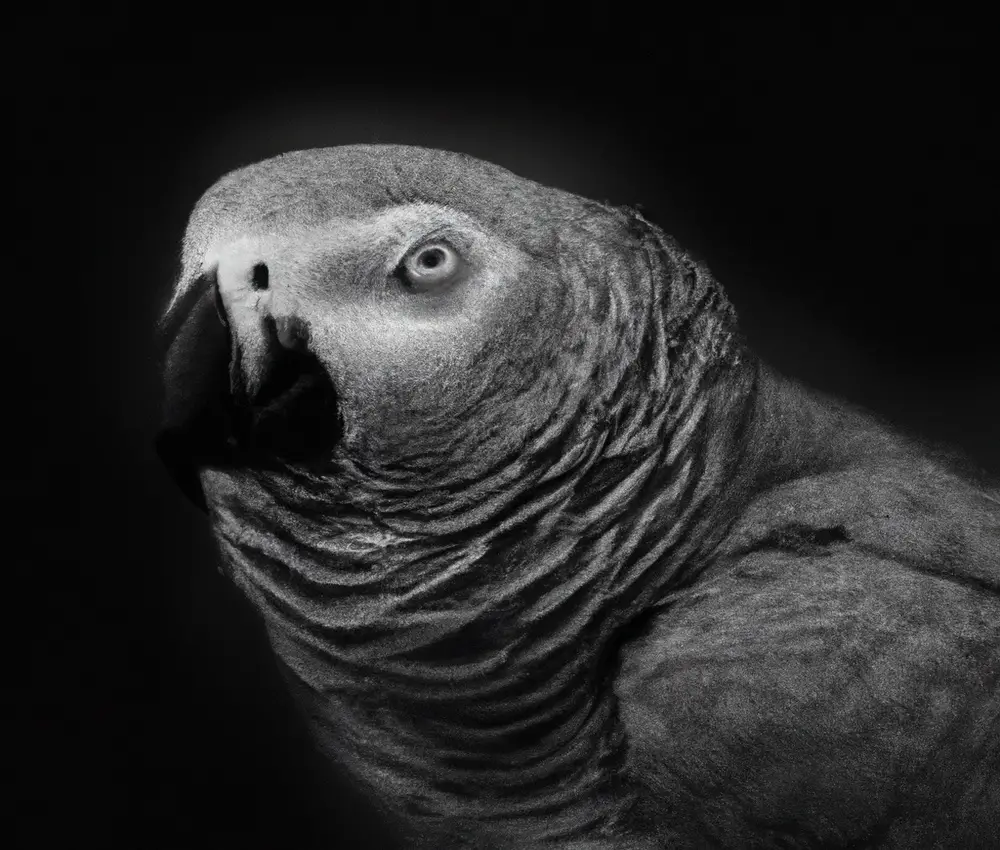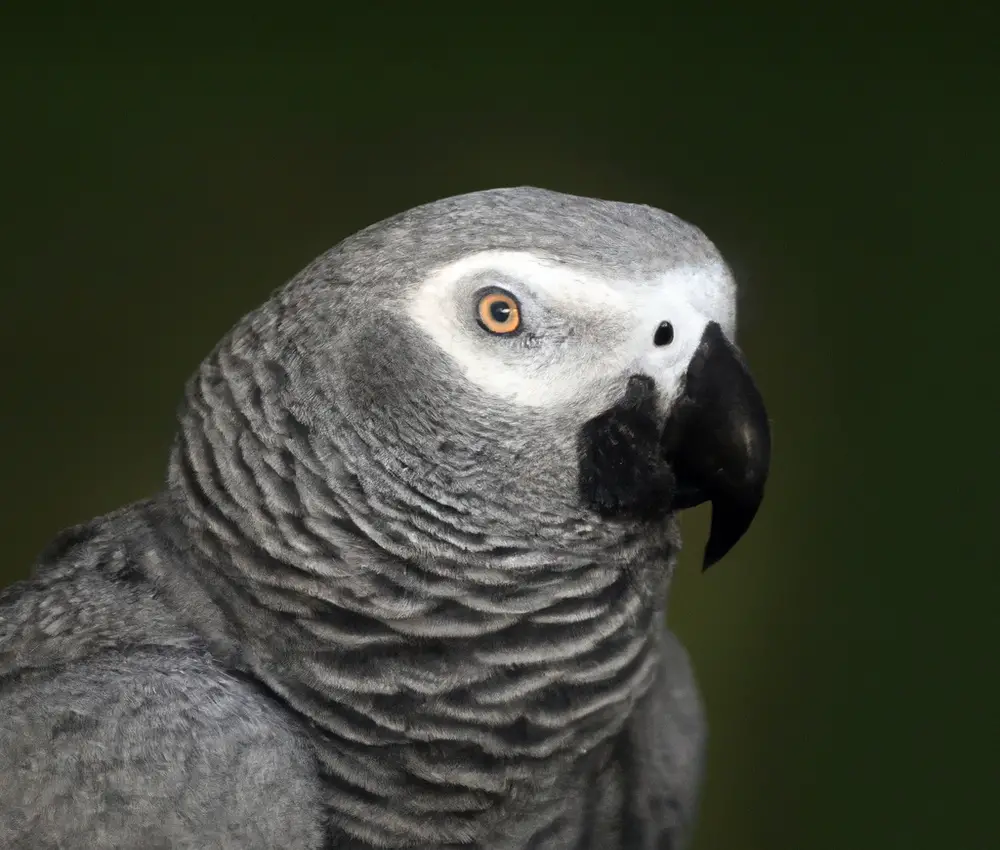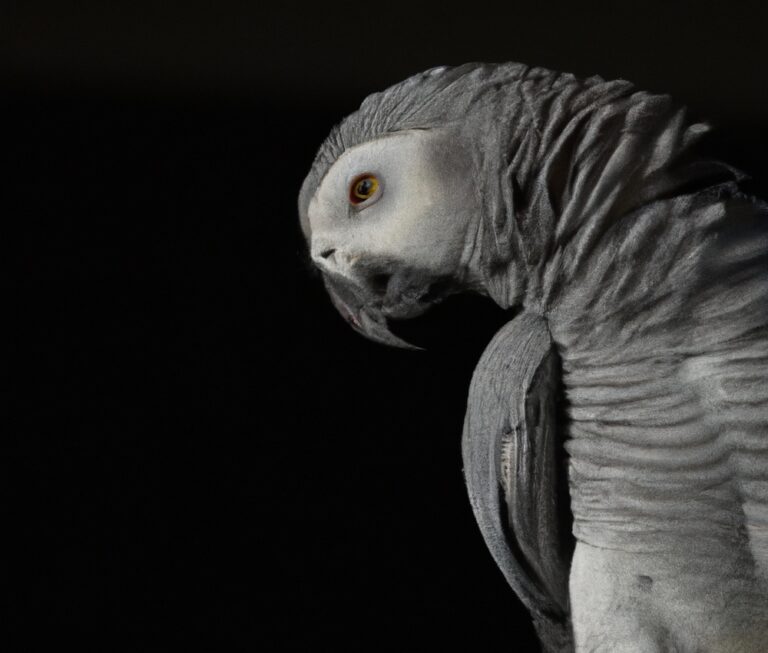How Do African Grey Parrots Use Tools In The Wild?
Key Takeaways:
- African Grey Parrots in the wild have been observed using tools for various purposes.
- They use tools for foraging, feeding, and manipulating objects in their environment.
- These intelligent birds exhibit problem-solving skills and adapt their tool use to different situations.
- The tool use behavior of African Grey Parrots showcases their impressive cognitive abilities.
Have you ever wondered about the incredible intelligence of African Grey Parrots and how they utilize tools in the wild? These captivating birds, renowned for their remarkable cognitive abilities, have intrigued researchers and bird lovers alike.
In this article, we will delve into the fascinating world of African Grey Parrots, exploring their tool usage behavior, the various types of tools they employ, and the purpose behind their remarkable skills.
Join me as we unlock the secrets of their natural environment, understand the significance of tool usage, and discover how we can protect these magnificent creatures and their habitats.
| Tool Use | Description |
|---|---|
| Bending sticks | African Grey Parrots bend branches or twigs to reach food, water, or move objects. |
| Twig manipulation | They use twigs as tools to extract insects from tree bark or to scratch their bodies. |
| Seed opening | African Grey Parrots use tools to crack open hard-shelled seeds or nuts. |
| Tool manufacture | In rare cases, they fashion tools from available materials to solve problems or access food. |
Overview of African Grey Parrots and their intelligence
African Grey Parrots are a highly intelligent species known for their advanced problem-solving abilities and complex vocalization skills.
Brief description of the African Grey Parrot species
African Grey Parrots are medium-sized parrots known for their incredible intelligence and ability to mimic human speech.
They have a distinctive gray plumage, bright red tail feathers, and a black beak.
These parrots can grow up to 13 inches in length and are native to the rainforests of West and Central Africa.
African Grey Parrots are highly social and form strong bonds with their human companions.
They are also known for their complex vocalizations and problem-solving skills.
Discussion on the intelligence of African Grey Parrots
African Grey Parrots are known for their exceptional intelligence. They can solve complex problems, recognize shapes and colors, mimic human speech, and demonstrate a deep understanding of concepts.
Their ability to use tools in the wild further showcases their intelligence.
They use various objects as tools to extract food, manipulate their environment, and communicate with each other. This behavior highlights their cognitive abilities and adaptability in their natural habitat.
African Grey Parrots’ intelligence is a fascinating aspect of their species and contributes to their survival and success in the wild.
Tool usage in the animal kingdom
Many animal species demonstrate tool usage in their natural habitats, showcasing their resourcefulness and problem-solving abilities.
Examples of tool usage in different animal species
Animals are more intelligent and resourceful than we give them credit for. Here are a few examples of tool usage in different animal species:
- Dolphins: They use sponges to protect their noses when searching for food on the ocean floor.
- Chimpanzees: They use sticks to extract insects from tree trunks or rocks to crack open nuts.
- Sea otters: They use rocks to dislodge and break open shellfish.
- Elephants: They use tree branches or their trunks to swat away flies or scratch their bodies.
- Birds: Some species use twigs or thorns to extract insects from tree crevices.
These examples show that animals are capable of using tools to make their lives easier in various ways.

Tool usage in African Grey Parrots
Tool usage in African Grey Parrots involves a variety of behaviors where they manipulate objects to achieve specific goals in the wild.
Brief overview of tool usage in African Grey Parrots
African Grey Parrots are known for their remarkable tool usage abilities.
They have been observed using tools in the wild to accomplish various tasks, such as acquiring food and accessing hard-to-reach places.
These intelligent birds use different types of tools, including sticks, twigs, and even bark to solve problems and meet their needs.
Tool usage in African Grey Parrots showcases their adaptability and resourcefulness in their natural environment.

Types of tools used by African Grey Parrots in the wild
African Grey Parrots in the wild are known to use various types of tools.
They primarily use sticks or twigs to extract food from tree crevices or to probe nests for eggs or chicks.
They have also been observed using leaves or pieces of bark to wipe their beaks or feathers.
These resourceful birds have even been seen fashioning tools by modifying branches or leaf stems to make them more suitable for their needs.
Natural environment of African Grey Parrots
African Grey Parrots inhabit the dense rainforests and woodland areas of West and Central Africa. They are adapted to the tropical climates and diverse plant life found in these regions.
Description of the natural habitat of African Grey Parrots
African Grey Parrots are native to the dense rainforests and woodlands of West and Central Africa.
They are typically found in countries such as Cameroon, Congo, and Ivory Coast.
These parrots prefer habitats with tall trees and a variety of vegetation.
They rely on the forest canopy for shelter and nesting sites.
The dense foliage provides them with protection from predators and the opportunity to forage for their favorite food sources, including fruits, seeds, nuts, and leaves.
The natural habitat of African Grey Parrots is crucial for their survival, as it provides the necessary resources for their well-being and reproduction.
Factors such as deforestation and illegal trapping for the pet trade pose serious threats to their natural habitat and population numbers.
It is vital to protect and preserve these habitats to ensure the continued existence of African Grey Parrots in the wild.
Factors influencing tool usage in African Grey Parrots
The factors that influence tool usage in African Grey Parrots can include their natural environment, social learning, and cognitive abilities. In their wild habitat, these parrots live in complex rainforest ecosystems, which provide opportunities for tool use.
They also have the ability to observe and learn from other members of their species, leading to the transmission of tool-using behaviors.
Additionally, African Grey Parrots possess advanced cognitive abilities that allow them to problem-solve and adapt their tool-use techniques. These factors collectively contribute to the tool usage behaviors observed in African Grey Parrots in the wild.
Types of tools used by African Grey Parrots
African Grey Parrots use various types of tools in the wild. Let’s dive into a detailed explanation of each type of tool used by these intelligent birds.
Detailed explanation of each type of tool used in the wild
African Grey Parrots use three main types of tools in the wild: sticks, leaves, and bark.
They use sticks to probe for insects in tree crevices, and they also use them to scratch and groom themselves.
Leaves are used to wipe their beaks and clean their feathers.
Bark is often chewed and ingested to aid in digestion and to obtain essential nutrients.
These tools play a crucial role in the survival and daily activities of African Grey Parrots in their natural habitat.

Purpose of tool usage in African Grey Parrots
African Grey Parrots use tools in the wild to accomplish specific tasks and solve practical problems.
Discussion on the reasons why African Grey Parrots use tools in the wild
African Grey Parrots use tools in the wild for several reasons. Firstly, tools help them access food that would otherwise be difficult to reach.
They use sticks or twigs to extract insects or seeds from crevices.
Secondly, tools aid in communication and social interaction. They may use objects to attract mates or establish territory.
Thirdly, tools provide mental stimulation and problem-solving opportunities, which are important for their cognitive development.
Overall, tool usage enhances their survival and adaptation in their natural environment.

Examples of tool usage and their benefits for African Grey Parrots
African Grey Parrots are known for their impressive tool usage.
They use tools like sticks and twigs for various purposes.
For example, they may use a stick to extract a hard-to-reach food item or to create a makeshift ladder to climb.
These tools help them access food, manipulate objects, and navigate their environment more effectively.
Tool usage enhances their foraging skills, problem-solving abilities, and overall survival in the wild.

Tool usage behavior in African Grey Parrot populations
African Grey Parrot populations exhibit interesting tool usage behavior.
Differences in tool usage behavior between African Grey Parrot populations
Tool usage behavior in African Grey Parrot populations can vary based on their geographic location.
One major difference is the type of tools used.
For example, African Grey Parrots in the wild may use sticks, twigs, or even leaves as tools.
Another difference is the purpose for tool usage, with some populations using tools to extract food while others may use them for communication or opening objects.
These differences in tool usage behavior reflect the adaptability and resourcefulness of African Grey Parrots in different environments.
Impact of tool usage on survival and adaptation in the wild
Tool usage plays a crucial role in the survival and adaptation of African Grey Parrots in the wild.
By using tools, these parrots are able to access food sources that would otherwise be unreachable, increasing their chances of survival.
Tools also help them create protective nests and defend against predators.
This behavior enhances their ability to adapt to different environments and thrive in various conditions.
Conservation and protection of African Grey Parrots
It’s important to protect African Grey Parrots and their natural habitat to ensure their survival. Efforts have been made to conserve African Grey Parrot populations through various actions.
Importance of protecting African Grey Parrots and their natural habitat
Protecting African Grey Parrots and their natural habitat is of utmost importance because these parrots are highly intelligent and have unique communication skills. They play a vital role in maintaining the balance of their ecosystem, including seed dispersal and pollination.
Furthermore, these parrots face numerous threats, such as habitat loss and illegal trade, making conservation efforts crucial to their survival.
Protecting African Grey Parrots and their natural habitat ensures the preservation of a remarkable species and the maintenance of a healthy environment.
Actions taken to ensure the conservation of African Grey Parrot populations
To ensure the conservation of African Grey Parrot populations, several actions are being taken. These include:
- Establishing protected areas: Creating protected areas, such as national parks and reserves, helps safeguard the natural habitats of African Grey Parrots, providing them with a secure environment to thrive.
- Enforcing legal protection: Governments and conservation organizations are implementing laws and regulations to prohibit the capture, trade, and hunting of African Grey Parrots. These measures aim to prevent the illegal exploitation of these birds and reduce the threat to their populations.
- Enhancing public awareness: Educating local communities, tourists, and the general public about the importance of African Grey Parrot conservation is crucial. This awareness helps foster a sense of responsibility and encourages people to support conservation efforts.
- Promoting sustainable land use practices: Encouraging sustainable agriculture, forestry, and land management practices can minimize habitat destruction and degradation, protecting the natural habitats of African Grey Parrots.
- Supporting community-based conservation initiatives: Involving local communities in conservation efforts can lead to more effective and sustainable outcomes. Providing alternative livelihood opportunities and involving communities in monitoring and patrolling efforts can help protect the parrots and their habitats.
These actions, combined with research, monitoring, and collaboration between governments, conservation organizations, and local communities, are essential for ensuring the long-term survival of African Grey Parrot populations.
Frequently Asked Questions
How do African Grey Parrots learn to use tools?
African Grey Parrots learn to use tools through a combination of observational learning and trial-and-error.
They observe other parrots using tools in their natural environment and imitate their actions.
They also experiment with different objects and learn which ones can be used as tools.
This learning process helps them develop their tool usage skills.
Can African Grey Parrots use tools in captivity?
Yes, African Grey Parrots can use tools in captivity.
These intelligent birds have been observed using objects like sticks, feathers, and other items to solve problems, manipulate their environment, and obtain food.
Providing them with opportunities for exploration and problem-solving can encourage their natural tool usage behaviors.
Are there any other bird species that use tools in the wild?
Yes, there are other bird species that use tools in the wild. Some examples include the New Caledonian crow, which uses sticks to extract insects from tree bark, and the woodpecker finch, which uses twigs to extract grubs from tree trunks.
Tool usage in birds is a fascinating behavior that highlights their intelligence and adaptability.
Final Verdict
African Grey Parrots are remarkably intelligent birds known for their tool usage in the wild. They possess the ability to select, modify, and utilize various types of tools to solve problems and enhance their survival.
Their natural environment, along with their high cognitive capabilities, plays a significant role in their tool usage behavior.
By understanding the types of tools they use and the purpose behind their usage, we can gain insight into their remarkable adaptability and resourcefulness. However, it is crucial to prioritize the conservation and protection of African Grey Parrots and their natural habitat to ensure their survival for future generations to witness their extraordinary tool usage behavior.







